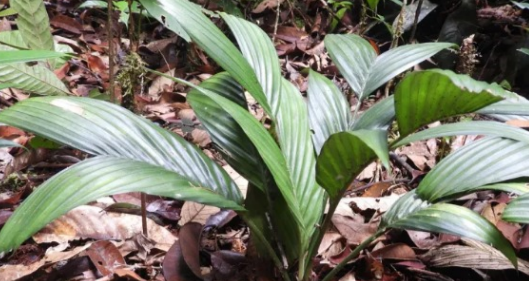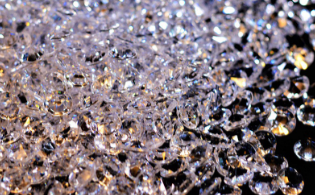This unique palm is the first of its kind, producing flowers and fruits exclusively underground.

Palm trees are commonly associated with iconic locations like Hollywood Boulevard and tropical resorts, yet within the palm family Arecaceae, there exists a diverse array of shapes and sizes. One member of this family, the newly discovered Pinanga subterranea palm, takes an extraordinary approach by growing its flowers and fruit entirely underground.
Palm
Benedikt Kuhnhäuser, a botanist at the Royal Botanic Gardens, Kew, in Richmond, England, describes this palm as particularly unusual. The palm was initially noticed by Malaysian botanist Paul Chai in the late 1990s within the Lanjak Entimau Wildlife Sanctuary on the island of Borneo. However, due to flooding in Kuching, the capital of the Malaysian state of Sarawak, Chai lost all photographic evidence of the mysterious plant. In 2018, during a discussion over breakfast, Chai informed Kuhnhäuser and other botanists about the lost palm, prompting a multi-day trek to the sanctuary. To their surprise, they discovered that the underground palm was not only real but also quite abundant.
While growing anything other than roots underground is rare, examples can be found across the plant kingdom. South-central Africa hosts an “underground forest” where plants flower aboveground but develop woody material below, and a Bornean pitcher plant buries its traps under the soil. Although plants across 33 different families conceal flowers or fruits underground, burying both is exceptionally rare. Apart from the underground palm, Kuhnhäuser notes that only one other plant worldwide shares this characteristic—an orchid genus called Rhizanthella in Australia.
Despite being a novel discovery for Western scientists, local Indigenous people, who knew the palm well, had names for it and consumed its inconspicuous fruit as a snack. Cibele de Cássia Silva, a botanist at the University of Campinas in Brazil, emphasizes the importance of acknowledging Indigenous knowledge in scientific papers.
The biology of the palm adds to its intrigue. While the pollination and seed dispersal mechanisms of most plants occur aboveground, the underground palm may rely partially on self-pollination. Silva suggests that beetles could potentially move pollen between plants even belowground. Additionally, the researchers observed wild pigs digging up the palm’s fruits, indicating that these animals might aid in spreading the seeds through their feces. The plant was officially described in the journal Palms in June 2023, with its unique biology detailed around the same time in Plants, People, Planet.
Sidonie Bellot, Kuhnhäuser’s colleague at Kew, is currently investigating the relationships between the underground palm and its relatives, providing insights into the evolutionary steps leading to its subterranean lifestyle. Given that many of its relatives already live close to the ground, the transition to an entirely underground existence may not have been as significant as it appears.




